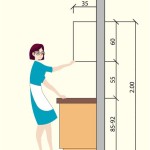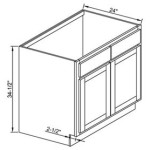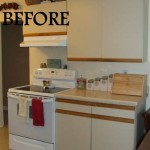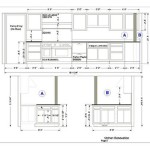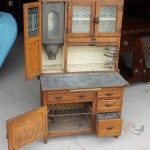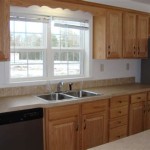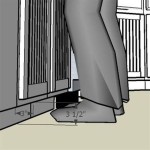Wood For Kitchen Cabinets: What Is The Best Choice?
Selecting the right wood for kitchen cabinets is a critical decision impacting both the aesthetic appeal and longevity of the kitchen. The market offers a diverse range of wood species, each possessing unique characteristics regarding grain pattern, hardness, durability, and cost. Understanding these nuances is essential for making an informed choice that aligns with individual needs and budgetary constraints.
The choice of wood directly influences the overall style and character of the kitchen. Some woods lend themselves well to contemporary designs, while others are better suited for traditional or rustic aesthetics. Moreover, the finish applied to the wood enhances its natural beauty and provides protection against moisture, stains, and wear and tear. Proper consideration must be given to the interplay between wood species, finish, and kitchen design to achieve the desired result.
Hardwood vs. Softwood: An Overview
The terms "hardwood" and "softwood" are often misleading, as they do not necessarily correlate with the actual hardness of the wood. Generally, hardwoods are derived from deciduous trees, which lose their leaves annually, while softwoods come from coniferous trees, which remain evergreen. However, this is a general rule, and there are exceptions.
Hardwoods are typically denser and more durable than softwoods, making them a preferred choice for kitchen cabinets. They offer greater resistance to dents, scratches, and everyday wear. Common hardwood species used in cabinet making include maple, oak, cherry, and walnut. These woods exhibit distinct grain patterns and color variations, allowing for a wide range of design possibilities.
Softwoods, while generally less expensive than hardwoods, are not typically the primary material for cabinet boxes or doors due to their relative softness. However, certain softwoods, such as pine, can be used in kitchen cabinets, particularly in rustic or farmhouse-style kitchens. When pine is used, it is frequently painted or distressed to enhance its aesthetic appeal and provide a protective layer. Fir is another softwood sometimes utilized, offering a straighter grain and greater stability than pine.
Popular Hardwood Choices for Kitchen Cabinets
Several hardwood species consistently rank as top choices for kitchen cabinet construction due to their desirable properties and aesthetic qualities. Each wood possesses unique characteristics, making it suitable for diverse kitchen styles and budgets.
Maple: Maple is a popular choice due to its hardness, durability, and smooth, even grain. It accepts paint and stain well, making it versatile for various design schemes. Maple's light color also makes it a good option for kitchens seeking a bright and airy feel. Maple is generally considered a mid-range option in terms of cost, offering a balance between price and performance.
Oak: Oak is a classic and readily available hardwood known for its prominent grain pattern and strength. Red oak has a pinkish hue and a more open grain, while white oak has a more subdued appearance and tighter grain. Oak cabinets are often stained to highlight the grain, creating a traditional and warm ambiance. Oak is typically a more budget-friendly hardwood option.
Cherry: Cherry is a premium hardwood prized for its rich reddish-brown color and smooth, fine grain. It develops a beautiful patina over time, adding character to the kitchen. Cherry is a softer hardwood compared to maple or oak, making it more susceptible to dents and scratches. It is generally a more expensive option, reflecting its superior aesthetic qualities.
Walnut: Walnut is a luxurious hardwood characterized by its dark brown color and intricate grain patterns. It is a durable and stable wood, making it suitable for high-end kitchen cabinets. Walnut is often used as an accent wood or for creating statement pieces within the kitchen due to its cost and dramatic appearance. Its natural beauty often requires minimal staining, allowing the wood's richness to shine through.
Hickory: Hickory is one of the hardest and heaviest hardwoods available. It is known for its strength, durability, and distinct grain patterns, which can range from straight to wild and varied. Hickory cabinets lend a rustic and natural feel to the kitchen. It is a relatively affordable hardwood option, making it a good choice for those seeking a durable and visually interesting material.
Engineered Wood Products and Their Applications
In addition to solid wood, engineered wood products play a significant role in kitchen cabinet construction. These materials are created by binding wood strands, fibers, or veneers together with adhesives to form composite panels. Engineered wood products offer several advantages, including cost-effectiveness, stability, and the ability to create large, consistent panels.
Plywood: Plywood is made by layering thin sheets of wood veneer and gluing them together with the grain of each layer running perpendicular to the adjacent layers. This construction method makes plywood exceptionally strong and resistant to warping or splitting. Plywood is commonly used for cabinet boxes and drawer bottoms due to its stability and affordability.
Particleboard: Particleboard is manufactured by compressing wood particles (sawdust, wood chips) with resin. It is a less expensive alternative to plywood but is also less durable and susceptible to moisture damage. Particleboard is typically used for cabinet interiors and shelving in dry environments. It has a smooth surface that is easily laminated or veneered.
Medium-Density Fiberboard (MDF): MDF is similar to particleboard but is made from finer wood fibers, resulting in a denser and smoother product. MDF is more stable than particleboard and less prone to warping. It is often used for cabinet doors and drawer fronts because it can be easily shaped and painted. MDF is also a cost-effective option for decorative panels and moldings.
When utilizing engineered wood products, it is crucial to select materials with low formaldehyde emissions to ensure good indoor air quality. Look for products that meet or exceed CARB (California Air Resources Board) Phase 2 standards.
The selection between solid wood and engineered wood products often depends on the specific application and budget constraints. Solid wood offers superior durability and aesthetic appeal, while engineered wood products provide cost-effectiveness and stability for certain cabinet components.
Beyond these considerations, it's important to consider the environmental impact of wood choices. Selecting sustainably harvested wood from responsibly managed forests helps ensure the long-term availability of this valuable resource. Look for Forest Stewardship Council (FSC) certification as an indication of sustainable forestry practices.
Ultimately, the "best" wood for kitchen cabinets is subjective and depends on the individual's priorities. Factors such as budget, desired style, durability requirements, and environmental concerns all play a role in the decision-making process. Careful consideration of these aspects will lead to a kitchen that is both beautiful and functional for years to come. Consulting with a cabinet maker or kitchen designer can provide valuable insight and guidance in selecting the most appropriate wood species and construction methods for a specific kitchen project.

Best Wood For Kitchen Cabinets Cabinet Materials Custom

Best Wood Types For Kitchen Cabinets Cabinet

Types Of Wood For Kitchen Cabinets Lily Ann

Best Wood Types For Kitchen Cabinets Cabinet

What Wood Is Best For Kitchen Cabinets Tru Custom Woodworks

Types Of Wood For Kitchen Cabinets Lily Ann

These Are 5 Of The Best Woods For Kitchen Cabinets

Kitchen Cabinet Woods 7 Of The Best Wood Species For Your Cabinets

Selecting The Best Wood For Kitchen Cabinets Thomas

Wooden Kitchen Cabinet Design Ideas Cafe
Related Posts

